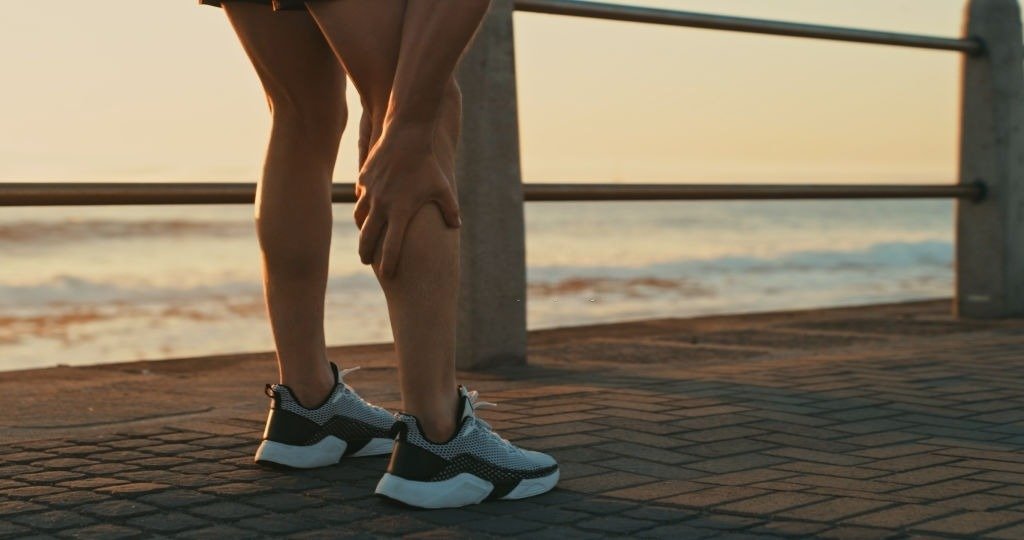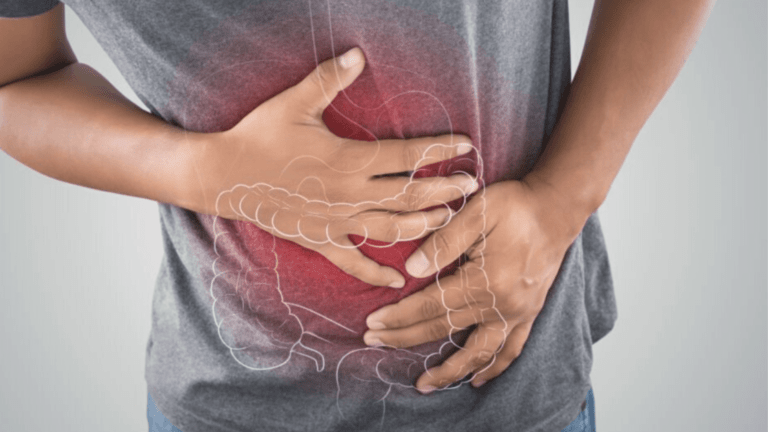Symptoms Of Calf Pain

The calf is comprised of two muscles – gastrocnemius muscle and soleus muscle. These muscles are located at the back of your knees and go together side by side to reach the Achilles tendon and merge. The tendon attaches directly to the lower part of your heel. Physical activities like running, walking, jumping are performed by these groups of muscles. Almost any leg movement is associated with these two muscles.
Calf pain may present itself as dull aches, soreness of muscles in the calf, or sharp tingling pain sensation in the lower half of the leg. However, the symptoms may vary from person to person.
Symptoms Of Calf Pain
- Swelling or fluid retention in the calf.
- Tingling or numb sensation of calf muscles.
- Soreness of the lower back of the leg.
- Paleness or yellow discoloration over the skin of the calf.
- Weakness.
- Tenderness of calf muscles.
Causes of calf pain
Underlying causes of calf pain may be difficult to diagnose, since various factors may contribute to the pain.
- Muscle cramps: The onset of sudden painful contraction of muscles are called muscle cramps. The condition may last for a small period, up to a few minutes. The cramps occur due to fatigue of muscles by excessive physical exertion. However, they are quite common, but sometimes the condition can be triggered due to dehydration, alcoholism, hyperthyroidism, etc. If you find muscle cramps are occurring too frequently, it is recommended to consult your doctor.
- Muscle strain: The hyperstimulation of muscles results in over-contraction of muscles resulting in fatigue and strain. This happens when you exert overly, or if you add a new exercise into your regimen. Usually, muscle strains resolve by themselves after two or three days and they can be easily treated at home. You can use a muscle relaxant or a pain killer. If the muscle strain persists, it is advised to consult your doctor.
- Achilles Tendonitis: The tear of the Achilles tendon due to overuse, stress or strain causes Achilles tendonitis. The symptoms include pain in the lower half, restrictions of leg movements during flexion, or pain during a walk. Normally, it can be treated at home by applying an ice pack and taking a rest.
- Sciatica: The sciatica nerve passes down from your lower back to your legs. In case, if these nerves get pressed down, pressurized, or pinched when you sit or stand for a while, the pain shoots up. Usually, it also can be mitigated by applying a cold pack and taking a rest. If pain persists, you may need to consult your doctor.
- Deep Vein Thrombosis (DVT): DVT is a result of forming of blood clots in deep veins, which can cause pain. There are various reasons for DVT. Sometimes, it includes sitting for a long time, smoking, or some other medical conditions. The symptoms include an enlarged visible vein in the area, pain, swelling, and tenderness. You should consult the doctor immediately if you suspect you have DVT.
- Compartment Syndrome: It is a serious physiological condition when a large amount of pressure build-up occurs in the compartment of muscles due to poor blood circulation or some other cause. Typically, this condition occurs after you have been through accidents, major Injuries to your legs, or fractures of bones. This condition requires immediate medical attention, as it can lead to further complications.
- Diabetic Peripheral Neuropathy (DPN): DPN occurs when diabetic patients overexpose themselves to high blood sugar levels or as a result of genetic factors. This form of nerve damage affects the upper and lower limbs. Major symptoms include pain, swelling, tenderness, and discoloration. It is advised to consult your doctor if you think you have Diabetic Peripheral Neuropathy.
Calf Pain Relief: Immediate Relief
Calf pain can be caused by various reasons, but many can be resolved at home with simple treatments. It may work for some, and not for others. Anyhow, here are a few things you can do for pain relief.
1. R.I.C.E (rest, ice, compression, and elevation): As the abbreviation states, taking proper rest, applying ice on pained muscles, compressing the muscles with tight clothing, and keeping the legs in an elevated position can bring pain-relief to an extent. Try to keep your leg elevated in a position above your heart level to reduce swelling. Apply the ice pack for 20 minutes in affected areas and compress the ice pack against the area where you feel the pain.
2. Over-the-counter medication: For simple pains like muscle cramps and muscle strain, you can use paracetamol and ibuprofen to relieve pain instantly. However, keep in mind that you shouldn’t take them for more than 3-4 days. If the pain persists after 3-4 days, you should consult your doctor.
3. Stretching: Perform simple stretch exercises like elevating legs, standing up, and touching your feet. After the symptoms have subsided, you can stretch your calf muscles to get pain relief. Gradually increase your exercise intensity, rather than doing excessive exercises in a single day.
For more serious injuries, simple stretching and applying an ice pack won’t be enough. Your doctor may recommend physiotherapy.
When To Consult A Doctor?
For conditions like DVT, Compartment Syndrome, DPN, etc., it is advisable to consult your doctor before they get any worse. You may need medical intervention or even surgery in a few cases. Though, there won’t be any major complications during surgery.
Linda S.Ruehlman,PhD
View All By Linda






